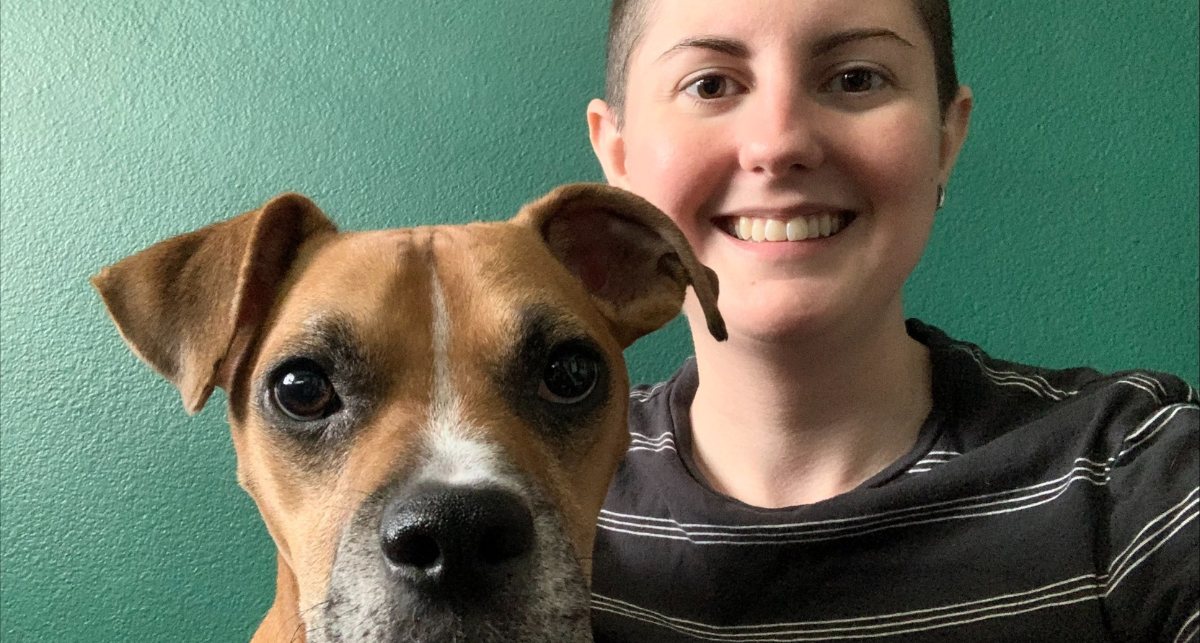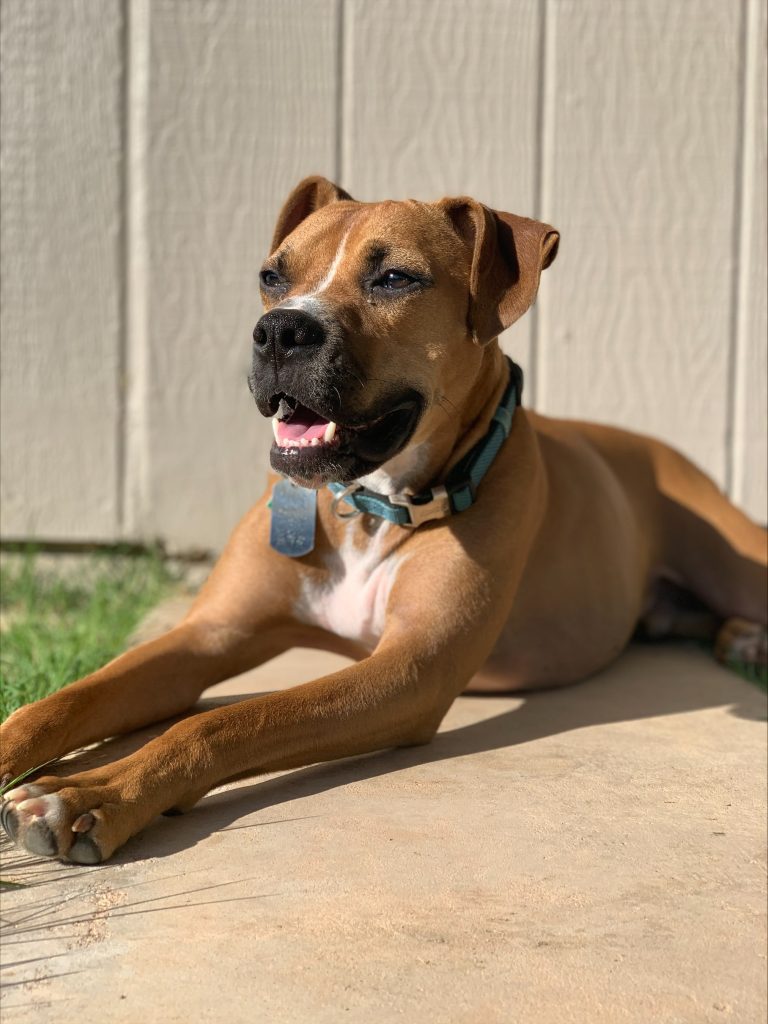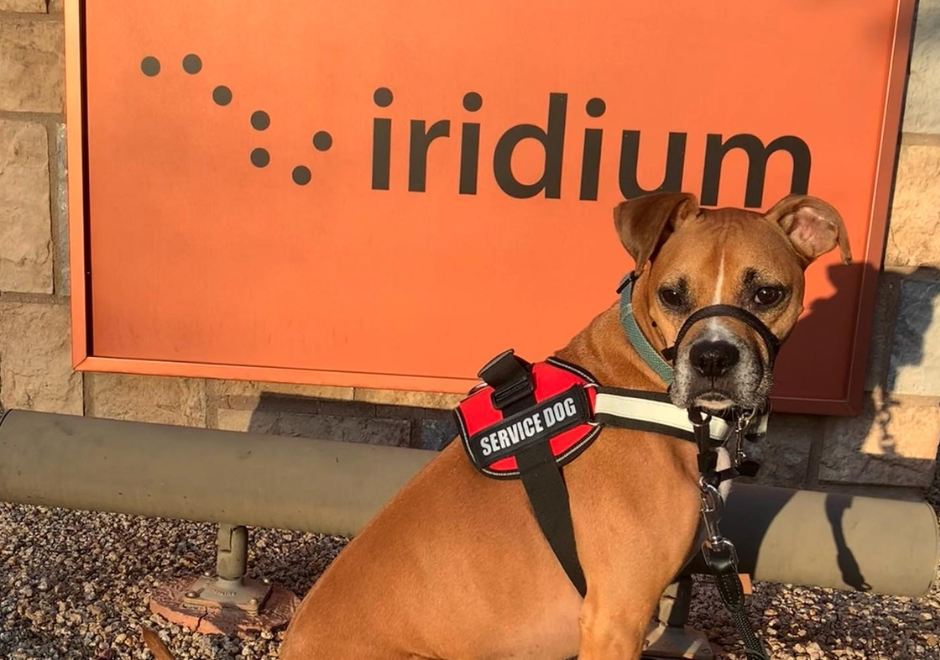Celebrating Deaf Awareness & National Service Dog Month

Every September, we celebrate Deaf Awareness Month—bringing awareness and visibility to the communication needs and unique identity of deaf and hard of hearing people—and National Service Dog Month—honoring the life-changing impact service dogs make on people with disabilities every day.
In case you missed it, Iridium’s IT Project Manager & Scrum Master, Natasha Hitzeman, shared their story as part of our Behind The Network series. Now, Natasha has a new co-worker and best friend we find particularly paw-some : service dog Pavlov!
Learn more about Natasha and Pavlov in this Q&A.
Can you please introduce and give a little background on yourselves?
Natasha: As you may have guessed so far, my name is Natasha, I’ve been with Iridium for about four and a half years and have a dual role as a Scrum Master and IT Project Manager. I love my role at Iridium and the chance to help bring some of our projects from idea to reality! I am also profoundly deaf in both ears. I can only hear things that are really loud and really low pitch, like a tuba if it’s right up in my ear. I often switch back and forth between English and American Sign Language (ASL), but there are still so many things around me that I’m oblivious to, and that’s where Pavlov comes in!
Pavlov: Woof woof!
Natasha: Okay, maybe I should translate. Pavlov is almost six years old and is a boxer mix. He provides much needed awareness to sounds around me—like alarms, doorbells, and general situational awareness (people walking up behind me, doors opening, etc.). Pavlov also absolutely embodies his namesake. In our case, no matter where he is in the house, if he hears our backdoor sensor chirp, he comes running!

Pavlov chillaxes in the Arizona sunshine.
How long has Pavlov been your service dog? Can you tell us the story of how you met?
Natasha: Officially, he has been my service dog for about a year. We adopted him almost six years ago as a puppy (If you saw his puppy pictures, you would impulse-adopt too!), and we started obedience training from day one because we just wanted him to be well-behaved as a pet. We didn’t adopt him with the intention of him becoming a service dog, but over time it became clear that he would be a good fit for me. I had been on two different waiting lists to get a service dog for over five years with no movement. I’ve wanted a service dog since I was a teenager, so I finally decided to look more into self-training.
Pavlov: One day these nice people came to play with me for a bit, then suddenly they took me home, and I’ve been here ever since! A while later, we started practicing new things, and one day they told me I was taking a test! I guess I passed because I have my own uniform and everything.
How long did Pavlov’s evaluation and training take? How has the transition been for you both?
Natasha: The evaluation took about three months, including reaching out to various training organizations and the different observation settings. It took about eight months to pass his public access test, and we continue to practice skills weekly. If he were a puppy or had little obedience, it would have taken about one and a half to two years. He already had a strong foundation, so we had a head start.
The transition for me has been amazing! I used to have a lot of anxiety about not being aware of things around me, and Pavlov really alleviates that. Training is something that never stops, and it’s great to see how Pavlov handles all kinds of new situations and experiences. Plus, Iridium was really great about me incorporating him into my hybrid work schedule.
Pavlov: I used to nap whenever I wanted, but now I have to go to someplace called “work” and grocery shopping and stuff. It’s okay, though. I get lots of treats for good work, and people compliment me on my summer shoes that protect my paws from the Arizona heat.
Can you share what a day in the life of a service dog is?
Pavlov: On days when I work from home, I play and nap as much as I want until I hear one of those sounds that I’m supposed to tell Natasha about (Don’t ask me what the sounds mean. I just tell Natasha, and they figure it out.). When we go to work, I get dressed in my work vest, my leash, and my summer shoes so my feet don’t burn. Work doesn’t have as many doorbells to tell Natasha about, but there are always people walking around and doors opening so I have to pay attention!

Pavlov clocks in for work at Iridium’s Tempe, Arizona, office
Are other people allowed to pet Pavlov?
Natasha: Always ask first. Depending on what’s going on, I’ll usually say yes but I need to give Pavlov a release command first. Since he was a pet first, we had to create a clear distinction between being on duty and off duty so he knows when he can act like a pet versus a service dog. Part of this means making sure he doesn’t solicit attention from people unless given permission first.
Pavlov: Gimme all the pets! Shhh…..I won’t tell Natasha.
Is there anything else our audience might not know about service dogs for the deaf that you’d like to share?
Natasha: A lot of people who see Pavlov are usually curious about the Gentle Leader he wears around his nose. This is used often by those who are deaf because it allows for more situational awareness without putting the pressure on their service dogs. For example, if Pavlov turns his head to look at a sound, I can feel that movement and look in the same direction, but he doesn’t have to alert me to every single thing he hears.
Pavlov: It’s hard work! Sometimes I have to remember my training and how to tell Natasha that there is a sound. Sometimes there’s a sound I’ve never heard before, and I have to figure out what to do with it! Other than that, being Natasha’s service dog is paws-itively awesome!
More
- Learn about Iridium Director of Government Programs, David Robinson, and his service dog Reggie
- Want to join the Iridium team? Check out our openings.

